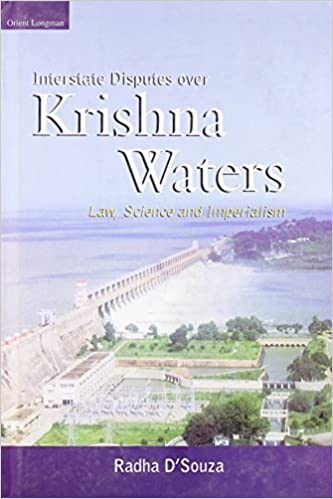
Volume 2/2
Christine Frison & Thomas Joie
The Drafting of a Legal Framework on Biosecurity by some Developing Countries: Experiences in the Implementation of the Cartagena Protocol in West Africa
This article analyses the drafting of national laws adapted and compliant to the Cartagena Protocol in terms of biotechnology and biosecurity by some countries of West Africa, participating in the “National Biosafety Development Project” of the UNEP-GEF. The authors attempt to identify perspectives linked to regulation and the potential difficulties that these countries may face. Hence, the different approaches and tools that have been decided upon by the West African countries to respond to the rights and obligations arising from the Protocol, and to their internal requirements and restrictions, are analysed. To the extent to which these countries have not yet adopted any national legal document, this article relies cautiously on the national biosecurity frameworks put forward to tackle the key questions on biosecurity: institutional and regulatory questions, decision-making procedures, public participation as well as other considerations of relevance to these countries.
Rajesh Sehgal
Legal Regime towards Protecting Coral Reefs: An International Perspective and Indian scenario
Corals Reefs are an important link in the marine biodiversity and millions of people depend on coral reefs for their sustenance and livelihood, yet these vital resources are in great danger today. Today, 27% of the world’s coral reefs have been lost and 14% are predicted to be destroyed in the next 10 to 20 years due to the threats caused by human activities like over fishing, pollution, sedimentation and climate change. On the other hand, the current legal regimes towards protection of coral reefs are often inadequate. Though, most countries have legislation for reef conservation and additional national laws and multilateral environmental agreements have been adopted by the countries with assistance of the international and inter-governmental organization. There exists a wide array of local, state, national, and international initiatives that attempt, in varying degrees, to protect and preserve these ecosystems, still the implementation of these laws is difficult and completely lacking. This article primarily focuses on the principal national (India) and international legal instruments that may provide for coral reef protection and provides recommendations for their better conservation. The article also highlight the condition of coral reefs and the difficulty in understanding their perilous situation.
Harbir Singh
Prospects and Challenges for Harnessing Opportunities in Medicinal Plants Sector in India
The importance of the medicinal plants sector can be gauged from the fact that herbal medicines serve the healthcare needs of about 80 per cent of the world’s population. India, with approximately eight percent of world’s biodiversity including plant genetic diversity with medicinal properties, has the potential of becoming a major global player in market for medicinal plants-based herbal formulations and products. However, prior to establishment of Medicinal Plants Board, there was no nodal agency to look into medicinal plants as an economic “sector” and different organisations dealt with different aspects of medicinal plants without any clear cut focus and coordination. This lack of co-ordination led to critical research gaps relating to socio-economic and policy aspects of medicinal plants. At the same time, absence of formal marketing linkages and effective buy-back arrangements hindered the development of medicinal plants sector. Developing appropriate varieties for cultivation which could ensure uniform quality and continuous supply of raw material for processing industry would not only meet the industry demand but also halt the degradation of natural resource base.
To capitalize on expanding opportunities in the international market, we need to focus on scientific methods of cultivation, harvesting, processing, grading, transport, storage, labeling and marketing practices involved in the entire supply chain for medicinal plants. Policy and institutional issues particularly related to co-ordination among various stake holders are one of the major constraints faced by this sector. Species- specific and socio-economic environment specific research would be helpful for identification of an optimal institutional framework to take care of needs of various stakeholders and also cater to social needs without adverse implications for equity and environment.
Comments
Whither the Convention on Biological Diversity?
by Desh Deepak Verma
The Convention on Biological Diversity (CBD) is in its crucial phase. During the 8 th Conference of Parties (CoP) meeting held at Curitiba , Brazil , Parties have decided to put an International Regime on Access and Benefit Sharing in flesh and blood. While the process for the same has been set in motion, it appears that the Parties, both developing and developed countries, grapple with the elements that the regime should contain. While the developed countries continue to be wary of the International Regime, the developing countries also do not seem to visualize very clearly what they want. To crystallise their agenda, the developing countries need to find answers to certain questions, some of them awkward ones. This paper tries to list out those question and issues which need to be settled much before the year 2010, the target date for finalisation of the International Regime.
Book reviews
Interstate Disputes over Krishna Waters: Law, Science and Imperialism
by Radha D’Souza (New Delhi: Orient Longman, 2006)
Reviewed by Usha Ramanathan, LEAD Journal


Volume 2/1
Mohamad Mova Al’Afghani
Constitutional Court's Review and the Future of Water Law in Indonesia
Enactment of the Water Law in Indonesia has arises public debate. The Judicial Review of the Law by the Constitutional added to this controversy as it puts the legality of the water regime in Indonesia in a “twilight zone”. This article explained the historical background of the water regime in Indonesia and its development, analyze the position of water rights and human rights to water under Indonesian Constitution, elaborates the key provisions of Indonesian water law, elaborate water law’s judicial review by the Constitutional Court, analyzes the legal consequences of the review and recommend the government on the parts of the law that needs to be amended or modified. The author also discusses several important issues that needs to be weighed by governments when creating the water law’s implementing regulation, including regulating several standard contract provisions between government and water investors.
Klaus Bosselmann
Poverty Alleviation and Environmental Sustainability through Improved Regimes of Technology Transfer
To achieve the Millennium Development Goals, international technology transfer can play a major role for poverty alleviation and environmental sustainability. At present, there are economic, social and legal (rather than technical) barriers preventing the transfer of environmentally sound technology (EST) from a wider use in international regimes. Removing these barriers requires greater political and regulatory efforts both domestically and internationally. To enable EST transfer, developed States need to improve domestic market conditions such as removal of negative subsidies and barriers to foreign investment, targeted fiscal incentives and law reforms favouring sustainable production and use of energy. There is no realistic perspective for international EST transfer as long as it is disadvantaged domestically. A coherent EST transfer regime is only possible through greater governmental intervention at the national and international level, including environmental regulations, national systems of innovation, and creating an enabling environment for EST. Such intervention should include effective public-private partnerships, both within and between States. Partnerships, if guided by law, could ensure EST innovation more efficiently than purely State-driven or market-driven EST transfers. In search for a model, the EST transfer regime under the Vienna Ozone Layer Convention and the Montreal Protocol deserves recognition. For example, the clean development mechanism under the Kyoto Protocol allows for considerable scope for EST transfer. The potential of EST transfer for climate change and for meeting the Millennium Development Goals has yet to be realized.
Mark Lancelot Bynoe
Citizen Participation in the Environmental Impact Assessment Process in Guyana: Reality or Fallacy?
Since June 1996, Environmental Impact Assessments (EIAs) have become mandatory in Guyana for all projects anticipated to have significant impacts on the environment. Furthermore, the law, i.e. the Environmental Protection Act, that brought this stipulation into being also identifies formal channels by which citizens are expected to participate from project conception through to the resolution of conflicts. However, while the Act is explicit with regards to citizen participation, the modalities by which they can participate effectively have been operating less than optimally.
Thus, this paper seeks to examine what the law states about citizen participation and to take a critical look at the participation process in Guyana. It utilises mainly secondary sources and the authors experience in the field to determine that a lack of innovation in the participation process is conspicuously absent. Furthermore, the participation process is conducted differently for most development vis-à-vis investment projects.
The paper therefore posits as one of its main recommendations, the need for a structured citizen participation plan to improve the involvement of the stakeholders, and modus operandi that are culturally appropriate that will allow for more substantive feedback and less cynicism of the process.
Leticia K. Nkonya
Customary Laws for Access to and Management of Drinking Water in Tanzania
Increasing human population, economic development and climatic changes in Sub-Saharan Africa (SSA) have fuelled water scarcity, hence there is an urgent need for effective water management laws and institutions. Unfortunately, national and local governments rarely possess enough personnel or money to enforce their laws adequately. In SSA countries formal water management laws and institutions tend to ignore the customary laws and institutions. Additionally, local communities both filter and ignore formal laws and institutions and use their customary laws and institutions to manage their water resources.
Despite their importance, there are only few empirical studies on customary laws and institutions for water management in SSA. This study attempts to fill this gap by analysing the impact of customary (informal) laws on water management in Tanzania and show how they might be used to complement the statutory (formal) laws for management of drinking water in rural Tanzania. The study will use both qualitative and quantitative methods to achieve this objective.
This study found that customary laws and institutions are the most influential in water access, prevention of pollution and abuse of water. The awareness of the customary and water user group laws was also generally high, perhaps due to the participatory nature of those institutions. The study also found that statutory laws were important for water development issues but community awareness of these laws was low. These results suggest the need of using both customary and statutory laws since the two instruments complement each other.
Sanjiv Phansalkar & Vivek Kher
A Decade of the Maharashtra Groundwater Legislation: Analysis of the Implementation Process
Maharashtra is among the few states in India that has enacted and implemented legislation to regulate the use of groundwater. The Act, known as Maharashtra Groundwater (Regulation for Drinking Water Purposes) Act 1993 stipulates inter alia, a minimum distance of 500 metres between a public drinking water source (PWS) and a well or a bore well of any farmer not used for that purpose. It provides for restriction of using pre-existing wells for non-drinking water purpose during certain times, empowers the Government to take over, remove the Water Extraction Mechanisms, and cut power supply or permanently close offending wells or bore wells. We find that in the most acutely water scarce area of Vidarbha in Maharashtra, there is wide, though imprecise awareness about the provisions of the Act. There is also a near complete absence of social support for the legislation. In fact farmers ‘using their own water’ are not considered as offenders even if their actions clash with the Act. The rural people as well as the office bearers of the Gram Panchayat appear reluctant and seem to be ‘revengeful’ towards those who are doing no worse than trying to earn incomes by using water for raising oranges. Instead of invoking the Act, people prefer to approach higher elected leaders and exercise pressure for creation of ‘upgraded’ drinking water facilities. Due to absence of this social legitimacy and the provision that unless the Gram Panchayat makes a formal complaint about violation of the spacing norm no action can be initiated, the Act has not been particularly effective in protecting the drinking water sources.
Nixon Sifuna
Using Eminent Domain Powers to Acquire Private Lands for Protected Area Wildlife Conservation: A Survey under Kenyan Law
Under Kenyan law, the provisioning for eminent domain is in the Constitution, as well as in legislation. Exercising these powers, the State may compulsorily acquire private lands, provided the acquisition is for a public good and compensation is given. Generally, eminent domain is a fairly contentious legal issue: the law on the one part guarantees the sanctity of private property and, on the other, allows the government to expropriate such property even against the will of the landowner. With regard to land, the State has a legal obligation to respect and protect privately owned lands, and a corresponding moral obligation to ensure that land is available to sustain other forms of life as well.
While Kenya’s wildlife estate is slightly less than eight per cent of the total land area, it is fast shrinking due to an increasing human population and human activities. As such, the wildlife sector has a bleak future unless the trend is reversed. One way of doing this is by using the powers of eminent domain to acquire private lands for purposes of creating and expanding the wildlife protected areas and their support zones. However, for this manner of acquisition to be desirable and advisable, it has to be fair, humane, democratic and honest. This is to ensure that conservation does not violate the rights of people or undermine livelihoods.
Incidentally, the process of eminent domain in Kenya is bereft of these attributes and tends to be draconian and militaristic. The paper critically examines the potential of using eminent domain for acquiring lands for protected area conservation and makes recommendations for reforms.
Comments
Dynamics of the Cross-border Management of Forests in the Congo Basin: Analysis of the Treaty Relating to the Conservation and Management of Forest Ecosystems in Central Africa
by Samuel Assembe Mvondo
The dynamics of cross-border management of forests in the Congo Basin have just reached a new stage in their construction, resulting from the adoption of the Treaty relating to the conservation and management of forest ecosystems in Central Africa on 5 February 2005 in Brazzaville. The review of the main provisions of this international agreement primarily reveals that the main commitments made by the Member States in the treaty, are consistent mutatis mutandis with the ethics regarding the principles of sustainable management of forests put forward by the international community. Then, the originality of this Treaty lies in the fact that it is the first legally binding text entirely devoted to the sustainable management of forests. Finally, this paper identifies other significant characteristics of the Treaty of Brazzaville, as well as numerous weaknesses that are likely to curb a successful application of this law.
Selected documents
Indonesia - Law on Water Resources, 2004

Treaty on the Conservation and Sustainable Management of Forest Ecosystems in Central Africa, 2005
